High Performance | Triple Whole House Water Filter System with Stainless Steel Enclosure (HPF-3)
- Durable & Sleek Tamper-Resistant & Weather-Resistant 304 Brushed Stainless-Steel Enclosure to Protect Your System
- Standard No. 42 in 20" x 4.5" Size Filters
- Watermark Certified to Australian Plumbing Standards AS/NZS 3497
- Quick and Straightforward Installation
- Pressure Gauges Included.
- Ideal for Installation on Mains/Town Water
- Durable Tamper, Corrosion and UV-Resistant 304 Brushed Stainless-Steel Enclosure & Frame Looks Great & Helps Protect Your Filter System
-
Big Blue Triple Filter System (Pre-Installed)
- 3 x Big Blue Filter Housings in 20" x 4.5" Size
- 3 x Pressure Gauges
- 3 x 1/4" Pressure Gauge Hole Plugs
- 1x Opening Spanner
- Your Choice Of Filters (Optional Add On, See Filter Options Below)
- Instruction/Warranty Sheet
- See Specs/Performance Tab for Dimensions & Technical Data
Our NEW High Performance Tamper, Corrosion, and UV-Resistant 304 Stainless Steel Enclosed Triple Whole House Water Filter System has been specifically designed to withstand the harsh conditions of the Australian environment, to help protect your whole house filter investment from UV exposure, heat damage, corrosion, and tampering. Just as you would protect any other house fixture from the weather, this unit is a must for those who want to protect their whole house filter system investment, in addition to maintaining a neat-looking home exterior.
Pre-fitted and easy to install thus saving time and installation costs, this solid unit is built to endure from the inside-out, featuring a sleek and industrially-designed 304 Brushed Stainless Steel Enclosure. 304 Stainless Steel is renowned for its strength and resistance to corrosion and oxidization thanks to the tough composition of steel, nickel, and chromium alloy. Chromium, in particular, is what makes this 304 Stainless Steel housing truly stainless, as it prevents the formation of rust with an ultra-thin and strong layer of chromium molecules that protect the underlying steel structure.
The Triple Cartridge Design, based on our Full Sized 20" x 4.5" Reinforced UV Resistant "Big Blue" housings, gives you peak water flow and a long contact time for maximum impurity reduction, with the freedom to customize your selection of premium-grade Sediment, 100% Coconut Carbon Block and Hard Water Conditioning filters (see below), which are certified to National Sanitation Foundation Standard No. 42. Pressure gauges also come standard with this system, to help you identify how your filters are going - simply mark the pressure level of each gauge upon installation. When you notice a significant drop in the level of pressure, this signals that your filter is starting to exhaust its capacity! This feature is super handy, particularly for those who get a lot of sediment on tank/bore** water.
WaterMark Certification
This Water Filter System is certified to WaterMark Standards AS/NZS 3497 under Certificate Number 23247.
WaterMark Certification is the level of certification required by law for a licensed plumber in Australia to install a water filter system. All products used under this certification will give you peace of mind, knowing that your water filter complies with Australian plumbing codes.
Our WaterMark Certified filter systems are hand-assembled here in Australia and are randomly batch tested to ensure top quality and workmanship for your water filtration products.
Technical Specs
-
System Size Dimensions:
- Height: 74.5cm
- Width: 60cm
- Depth: 22cm
- Filter Cartridge Size: 20" x 4.5"
- Ports: 1" Female BSP Inlet/Outlet Ports
- Pressure: 0 - 620 kPa
- Limit Pressure: ≤ 500 kPa
- Temperature: 0.5°C - 37.8°C
- Max Flow: 60 Ltrs/min (*System tested to 160 Ltrs/min. Maximum flow measured without cartridge. Refer to cartridge specs for flow rates.)
- Initial ΔP @ Flow: 10 kPa @ 57 Ltrs/min
PLEASE NOTE: THIS SYSTEM ALONE MAY NOT BE SUITABLE FOR RAIN, TANK AND BORE WATER FILTRATION. IF THIS IS YOUR WATER SOURCE, PLEASE SCROLL RIGHT DOWN TO THE BOTTOM AND READ SECTION **FILTERING TANK AND BORE WATER - IMPORTANT INFORMATION BEFORE YOU ORDER**.
WFDA's MAINS (CHLORINATED) WATER RECOMMENDATION + THINGS TO CONSIDER
- FILTER SIZE - The 20" x 4.5" size of system enables the maximum surface area and contact time for chemical reduction, and the best possible flow rate to prevent water pressure problems (which can occur by selecting too small a system). This system is designed to handle high flow, and on pressure-limited mains water (500kPa) you should not notice any significant reduction in pressure during regular water usage for an average household. However, if you suspect that you have lower than average water pressure and/or you are not sure whether this system will meet your requirements, please contact us to discuss before you finalise your purchase. If you have an unusually large household, a property with multiple guest suites, or commercial requirements for filtration, it may be viable to run two or more 20" x 4.5" Systems in tandem. If this is the case, please contact us to discuss your requirements before you finalise your purchas
(Under the Stainless Steel Covers of the High Performance Twin and Triple Whole House Systems)
-
HOW TO USE A PRESSURE GAUGE?
- Pressure gauges help to determine how clogged your filters are and monitor the performance of your system. Simply mark the level of pressure on the gauge upon installation or when you install a new set of filters - reduced pressure over time indicates filter blockage.

-
ABOUT DUAL CARBON - Dual Carbon will give you the best result for reducing the maximum amount of chemicals on a whole house scale on mains water. The combination of filters we most commonly recommend is the Maximum Chemical Reduction combination, which consists of:
- Filter 1: 5 Micron Sediment Filter
- Filter 2: 20 Micron Low Pressure Drop Coconut Carbon – Reduces chlorine without compromising on water pressure.
-
Filter 3: 0.5 Micron Lead (Heavy Metals) Reduction Coconut Carbon
- Filter 1: 5 Micron Sediment Filter
- INSTALLATION - Please note this system is WaterMark Certified to Australian Plumbing Standards (AS/NZS 3497), and will need to be installed by a licensed plumber. Simply order online with free shipping to your home, and once it arrives any local licensed plumber will be able to do the installation (the system also comes with instructions)! When calling around for quotes, be sure to ask about installing a "bypass" (see pictures below) so you can still get water into your home when the time comes for filter changes! Normally, a whole of house system will be installed wherever the mains water line tees into your property. As this system is UV resistant, it can be installed in direct sunlight or in the shade.
- FILTER CHANGES AND MAINTENANCE - Lastly, we recommended filter changes on an annual basis, and offer a 12-monthly filter reminder email service to help you remember! Simply email info@waterfiltertdirect.com.au when you place your order, and ask us to set you up with a filter reminder! Filter changes are easy enough – simply turn off the water going into the system, press down on the pressure relief valves, unscrew the sumps, replace the filters, screw it back up and turn the water back on! You may notice the water feels a bit "slippery" at first after installing new filters, but don't worry - this is normal and will go away quickly once enough water has run through the new filters. Also, if the water looks cloudy at first, again - don't stress! This is dissolved oxygen and it will go away quickly once enough water has run through the new filters.
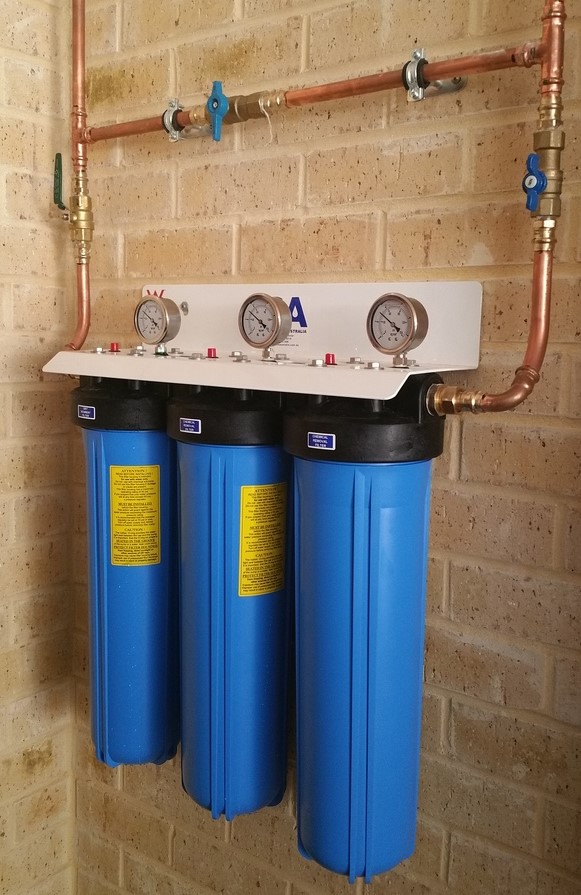
(Example of a Watermark Certified Whole House Filter System installed with a bypass.)
Sediment Filter
Poly Spun (Polypropylene) Disposable Sediment Filters
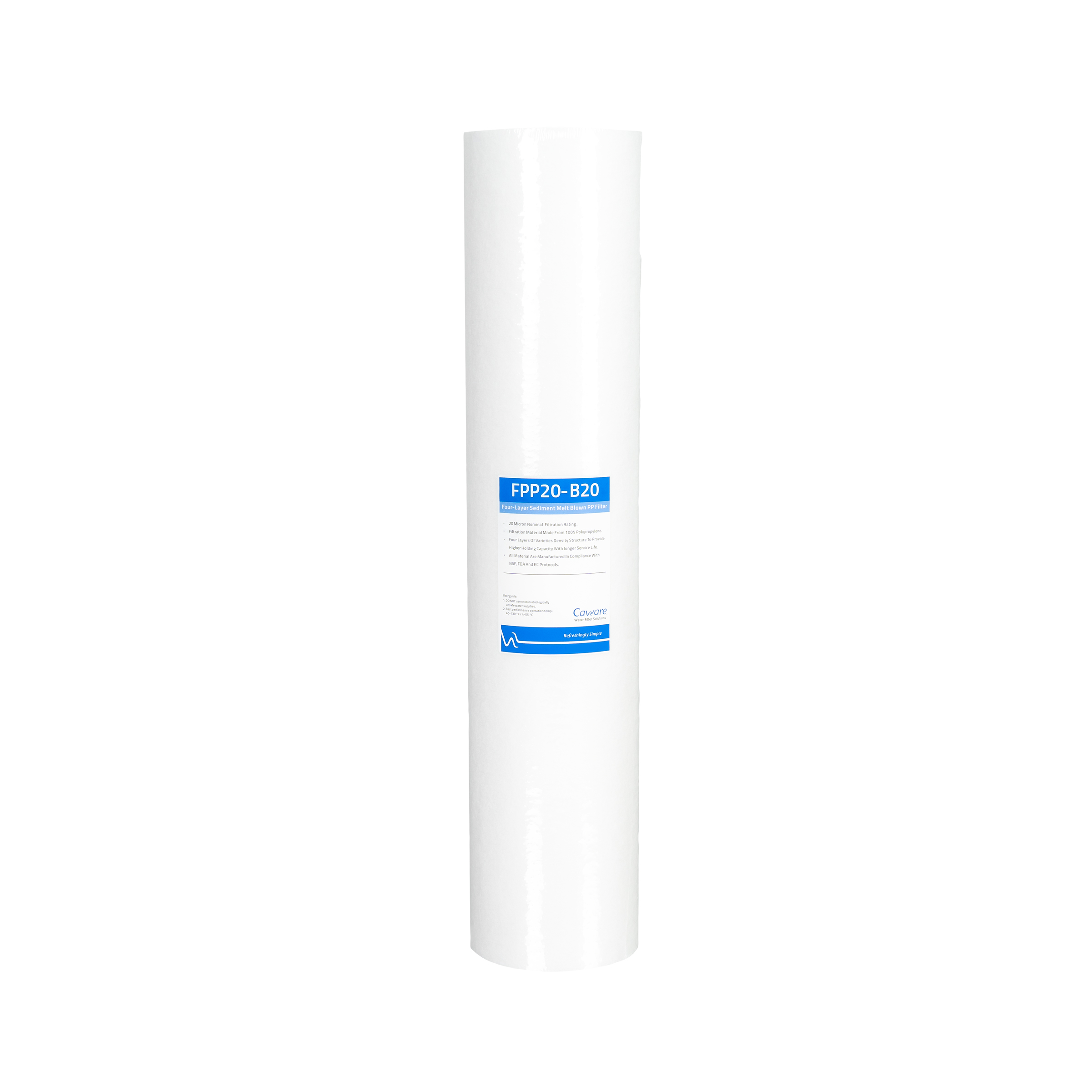
-
- High Flow & Low Pressure Drop
- Cost-Effective & Disposable
Poly Spun filters produce a high flow and low pressure drop, and do not accumulate bacteria as much as other materials. They are highly cost-effective and disposable. All of our poly spun filters are made of 100% Virgin Polypropylene. Polyspun filters are manufactured to create a gradient density that allows for excellent sediment-holding capacity and filtration efficiency.
Polyspun Filter:
-
-
- 5 Micron Polyspun Sediment Filter Cartridge
-
Pure Brand 100% Coconut Carbon Filters
- High Quality, 100% Coconut Shell Carbon that Produces "Sweet" Tasting Water
- Excellent Contaminant Reduction Capacity for Common Water Additives such as Chlorine, Trihalomethanes and Volatile Organic Compounds
- Recommended 12 Month Lifespan if Used on Municipal Treated Water
- Designed for Minimum Impact on Water Pressure
The perfect carbon block filter is made from 100% Coconut Shell Carbon, which creates what many believe to be the sweetest tasting water. The unique pore structure of this carbon is well suited for chemical absorption, including VOC's, while reducing chlorine and chemicals that contribute to taste and odour. Coconut Carbon provides a much higher volume of micropores than coal, wood, or lignite-based carbon. Thus, resulting in a more effective removal of trihalomethanes (THMs) from municipal water supplies. The larger surface area provides a more effective method of filtering common contaminants such as chlorine and chloramines. The unique raw material of the coconut shell and the carbon manufacturing process ensures exceptional hardness and low ash content.
Pure Brand's 100% Coconut Carbon Block Filters are made from a combination of high-performance coconut shell carbon, unique binders, and industry-leading manufacturing processes to deliver supreme-quality filtration. Expertly designed and manufactured, these filters deliver exceptionally low-pressure drop, resistance to sediment build-up, and excellent contaminant-reduction capabilities. Pure Carbon Blocks are registered in compliance with NSF/ANSI 42, 53, and 61 for several things, including VOCs, THMs, Lead & Heavy Metal Reduction, Chloramine Reduction & Chlorine Taste & Odour reduction. This also includes meeting incredibly high standards of purity and safety in the materials used.
Please see below for a full comparison of our range of Carbon Filters:
LPD - 20 Micron Low-Pressure Drop Coconut Carbon (For Effective Carbon Filtration Without Compromising Water Pressure)

-
- LPD Carbon is perfect for those with low water pressure concerns.
- Use standalone to filter chlorine in low-pressure systems.
- Ideal Pre-Filter for use alongside finer micron-rated carbons for optimal filtration and help extend the life of your more specialised carbon blocks, whilst maintaining good pressure (i.e. 20 Micron Low Pressure Drop Carbon followed by a 0.5 Micron Chloramine Reduction Carbon OR 0.5 Micron Lead Reduction Carbon).
Low water pressure is often referred to as the ‘bane’ of water filtration. Most filtration systems require minimum working pressures exceeding 350kPa to ensure the system functions correctly and won't affect the flow of water pressure to the house. However, many off-grid systems rely on an external pump system and subsequently struggle with low water pressure. The 20uM Low-Pressure Drop Carbon is designed for these conditions. It has been specially manufactured to have a very low density to allow free-flowing water without compromising on chlorine removal. This is achieved by using a special blend of activated coconut carbon of a hydrophilic nature, which allows the carbon to have less contact time whilst removing the comparable levels of chlorine and other chemicals as other coconut carbon filters of this size. Carbon is also required in some tank** water applications to remove organic smells or tastes in the water. NOTE: This filter MUST be fitted in conjunction with a 5 Micron Pre-Filter if used for UV-treatment (i.e. for raw/rainwater**).
Example Filter Combo For Mains Water*:
Filter 1: 5 Micron Pleated OR 5/20 Micron Poly Spun Sediment Filter
Filter 2: 20 Micron Low Pressure Drop Carbon Block
Filter 3: Your Choice of Coconut Carbon Block (See Below)
Example Filter Combo For Tank/Bore**
Filter 1: 5 Micron Pleated OR 5/20 Micron Poly Spun Sediment Filter
Filter 2-3: 20 Micron Low Pressure Drop Carbon Block
Filter 4: Ultraviolet Treatment (if on Tank/Bore**) (Not Included)
IMPORTANT - A 5 Micron filter MUST accompany the 20 Micron Low Pressure Drop Carbon if intended for Pre-Ultraviolet Sterilization. Carbon as the sole means of filtration is insufficient for treating rain/bore water. Please refer to the note at the bottom of this page: **FILTERING TANK AND BORE WATER - IMPORTANT INFORMATION BEFORE YOU ORDER**.
CRC - 0.5 Micron Chloramine Reduction Composite Coconut Carbon (Reduces BOTH Chlorine and Chloramines For Maximum Chemical Reduction on Mains Water)
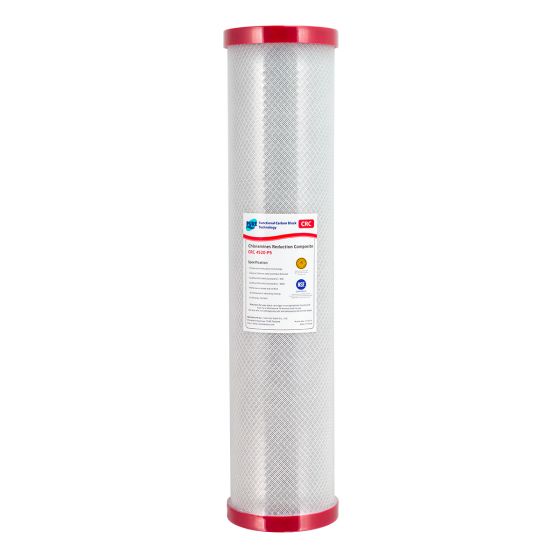
-
- CRC (Chloramine Reduction Cartridge) filters out more chemicals/contaminants than standard carbon alone (which doesn't remove chloramine).
- Ideal for use after the 20 Micron Low Pressure Drop Carbon Cartridge (see above) for Maximum Chemical Reduction in mains-treated water.
Boasting a 0.5uM nominal rating, our 0.5 Micron Chloramine Reduction Carbon Block filter has a huge, highly reactive surface area of composite catalytic carbon designed to denature and neutralise chloramine with minimal contact time. As water passes through the Chloramine filter, Chloramine and other chemicals react with the carbon block surface, producing denatured compounds that are then re-adsorbed by the carbon - essentially neutralising the Chloramine and Chlorine molecules.
Why remove Chloramine? Chloramine is fast becoming the most important topic when it comes to mains water. Free chlorine has long been the choice for cheap and long-lasting municipal water disinfection, and it can be easily removed from water with minimal contact time. However, the addition of monochloramine gas (NH2CL - an inorganic molecule composed of chlorine-bonded ammonia) is becoming more and more common as a secondary disinfection agent that provides longer-lasting disinfection than chlorine alone. Aesthetically, monochloramine gives off a strong chemical/ammonia smell in the water. Whilst monochloramine is noted to produce lower (but still present) levels of chlorocarbons and carbon tetrachloride levels as compared to chlorine, unfortunately for the consumer, it can pose many health and aesthetic effects - from skin sensitivities & respiratory issues to heavy metal leaching. Especially when mixed with fluoride (another common municipal additive), chloramine can dissolve copper and lead, thus increasing pipe corrosion and the leaching of heavy metals. You may have seen this in action, as this is a common cause of blue/green staining in and around pipes, especially in areas with older infrastructure. Yes, Chloramine may kill pathogens in the water - but do you really want to be drinking it? Our answer is: probably not!
Mains Water Filters:
Filter 1: 5 Micron Pleated OR 5/20 Micron Poly Spun Sediment Filter
Filter 2: 20 Micron Low Pressure Drop Carbon
Filter 3: 0.5 Micron Chloramine Reduction Carbon
**FILTERING TANK AND BORE WATER - IMPORTANT INFORMATION BEFORE YOU ORDER**
About Rain Water
Australia is the world’s driest inhabited continent, and an astonishing 10% of Aussies don’t have access to a mains water supply, so it’s no wonder why rainwater and bore storage tanks are so popular in rural areas to save water during drought and for household use all year round in cooking, cleaning, gardening, bathing and sometimes even drinking. However, whilst many people enjoy the sweet taste of rain and spring water, and some even swear by the ‘raw water’ trend (which proponents (sometimes falsely) believe has more minerals and fewer contaminants than regular chlorinated town water), we cannot stress enough that drinking untreated water is a very bad idea!
Scarily, in Australia, the general public perception is that rainwater is pure, clean, and safe to drink, but according to the Australian Environmental Health committee’s Guidance of the Use of Rainwater tanks, the fact is that the microbial quality of tank-collected rainwater is typically worse than regular urban tap water, and not to mention, the chemical quality of rainwater can be negatively impacted for those living near heavy industry or in areas with heavy traffic emissions. For example, rainwater samples in Port Pirie, South Australia, (which has one of the world’s largest lead smelters), have been found to contain levels of lead that exceed Australian Drinking Water Guidelines by up to ten times! Even bushfire can contaminate rainwater! And that’s not to mention the microbiologically sickening soup of bacteria, viruses parasites that inevitably make their way into your tank from disease-spreading insects such as mosquitoes, the excrement and decaying carcasses of frogs, snakes, rodents, and possums that commonly live in and around tanks, and the droppings from bats and birds flying overhead! Also consider that bacteria tend to proliferate in moist and warm environments, meaning that warmer weather, in particular, has the tendency to turn your tank into a putrified bacterial breeding ground. Thus, whilst rainwater may smell odourless, taste great, and look clean and clear to the naked eye, with the human senses alone, you simply cannot tell what potentially harmful microscopic contaminants could be lurking in your tank water (even after filtering the water with carbon) – and you certainly don’t want to be drinking it!
About Bore Water
Bore water will always require filtration, as whilst you would think it is “naturally purified” to some extent as the water seeps through the aquifer via various layers of bedrock, this water is highly susceptible to contamination by bacteria, viruses, parasites (see: Brain-Eating Parasites), sewerage (think human excrement, cleaning and bathing products), chemicals, fertilisers, pesticides, minerals, heavy metals (such as lead, zinc, chromium, copper, cadmium, arsenic and nickel), and sometimes even radioactive elements (such as uranium) from both natural sources and human activity. As with rainwater treatment, the most cost-effective solution is typically to use 5 Micron Carbon Filtration in combination with UV Sterilisation to ensure 99.9% eradication of all parasites, bacteria, viruses. However, this system is not always a "total fix", as bore water chemistry is incredibly complex, and sometimes may not even be treatable. Yet another common misconception we often encounter is that carbon can filter out anything and everything – but unfortunately, carbon doesn’t kill bacteria or remove minerals, salts and other such dissolved inorganic substances!
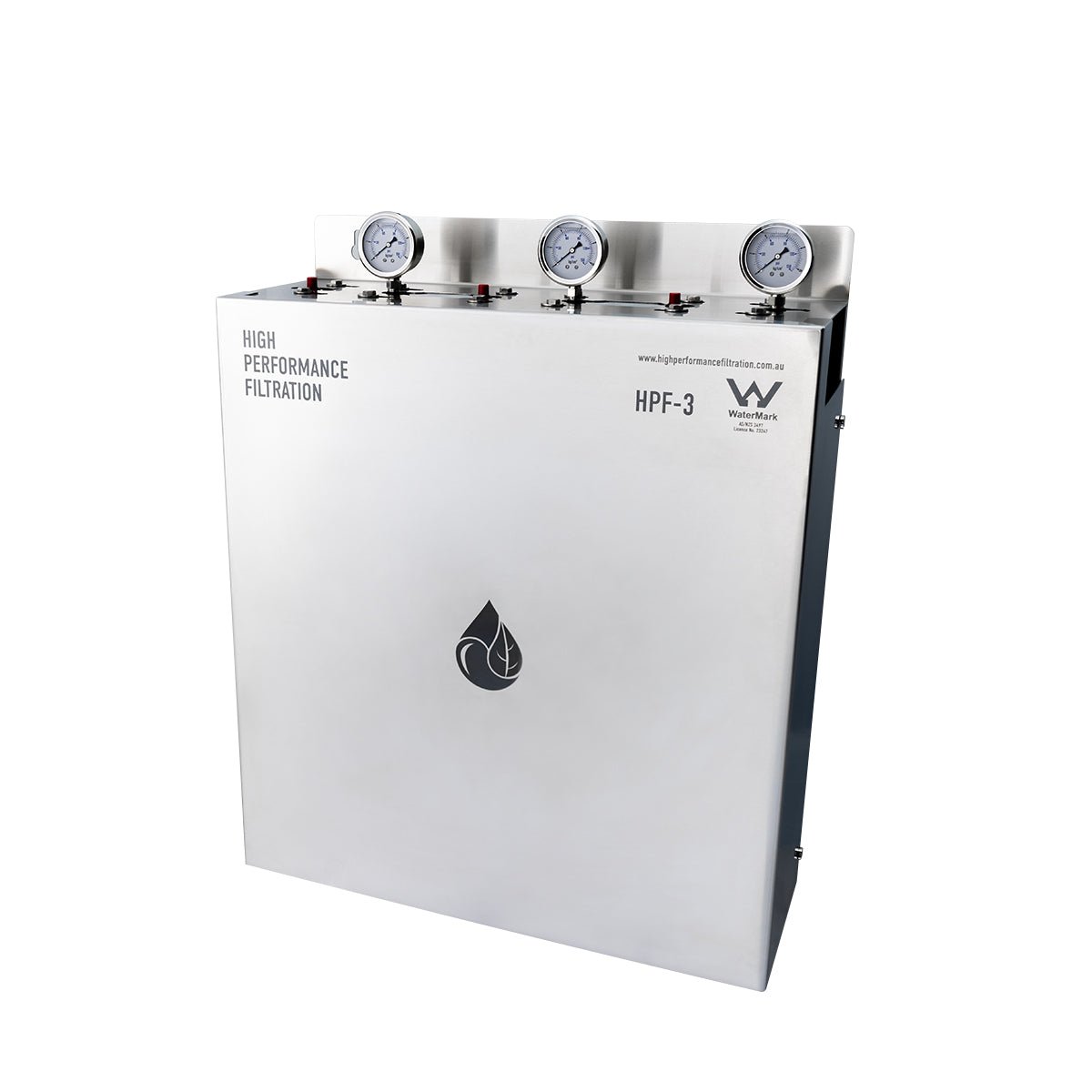
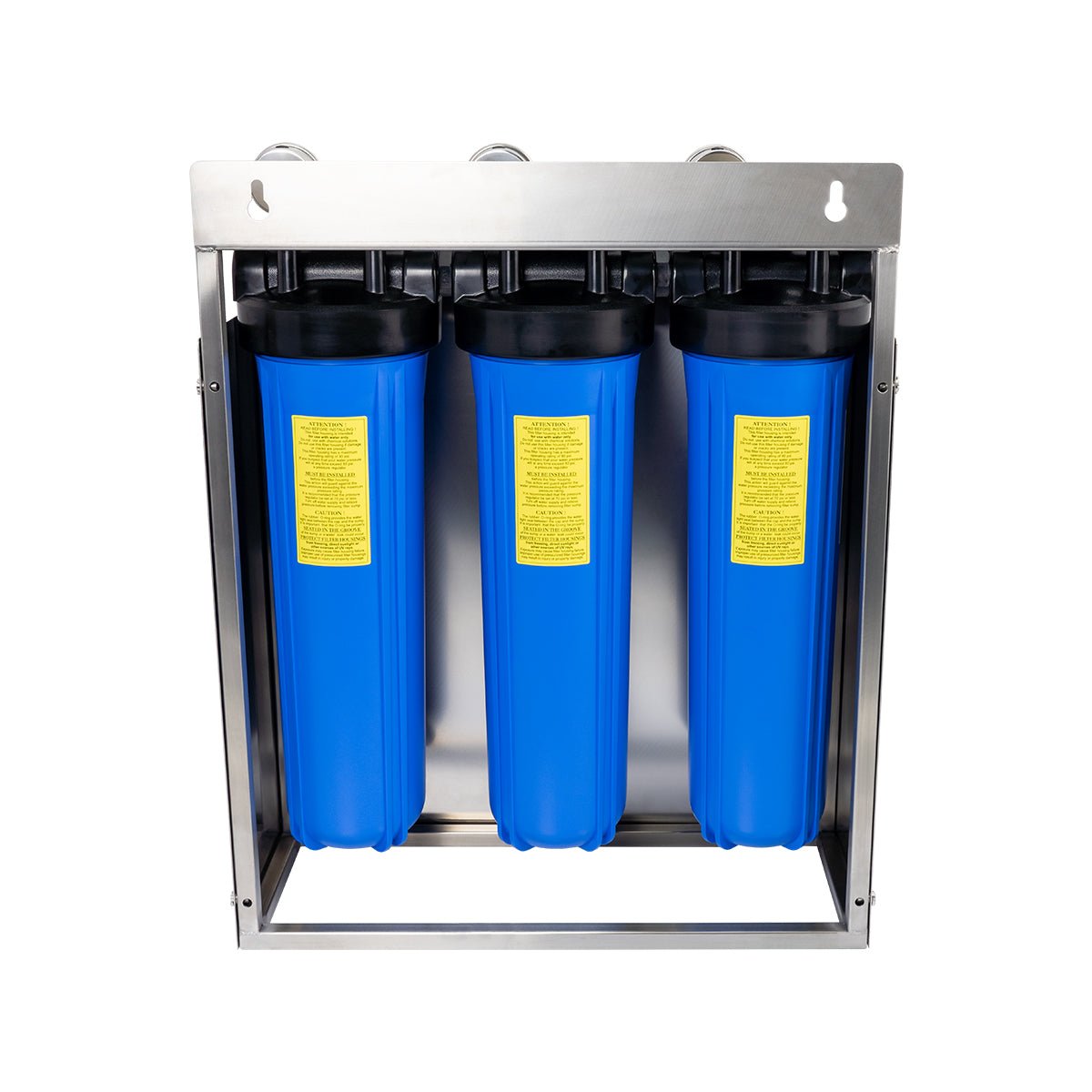
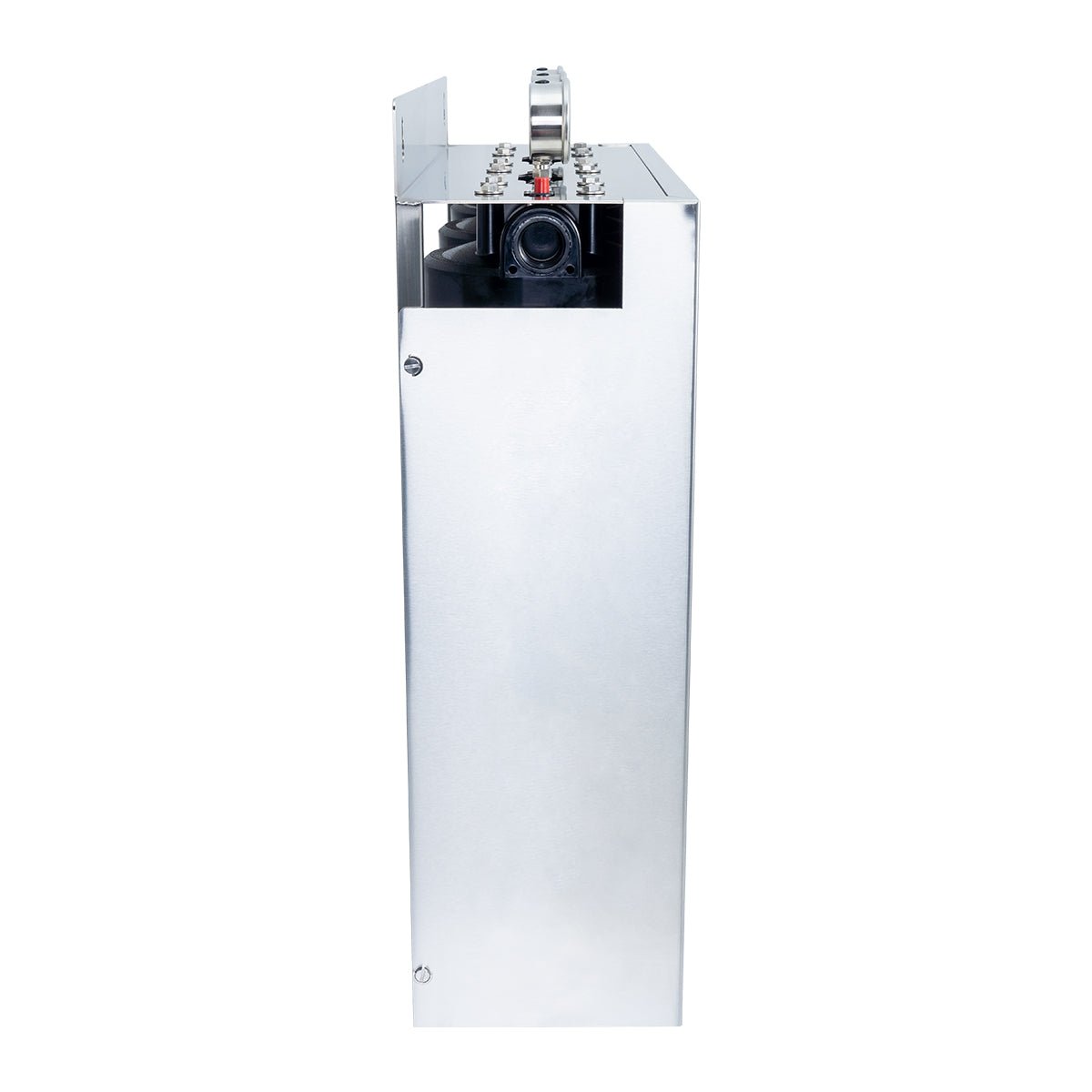
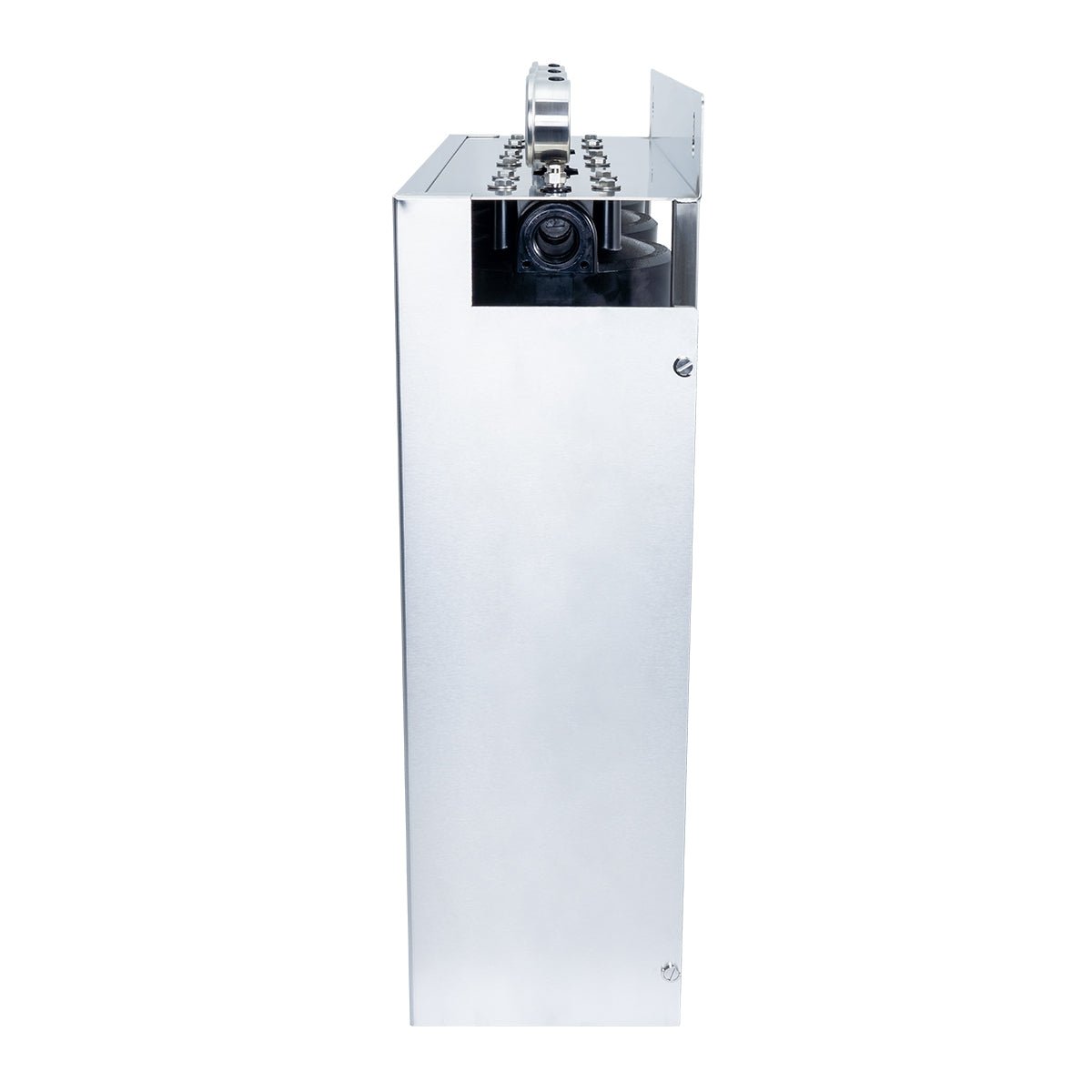
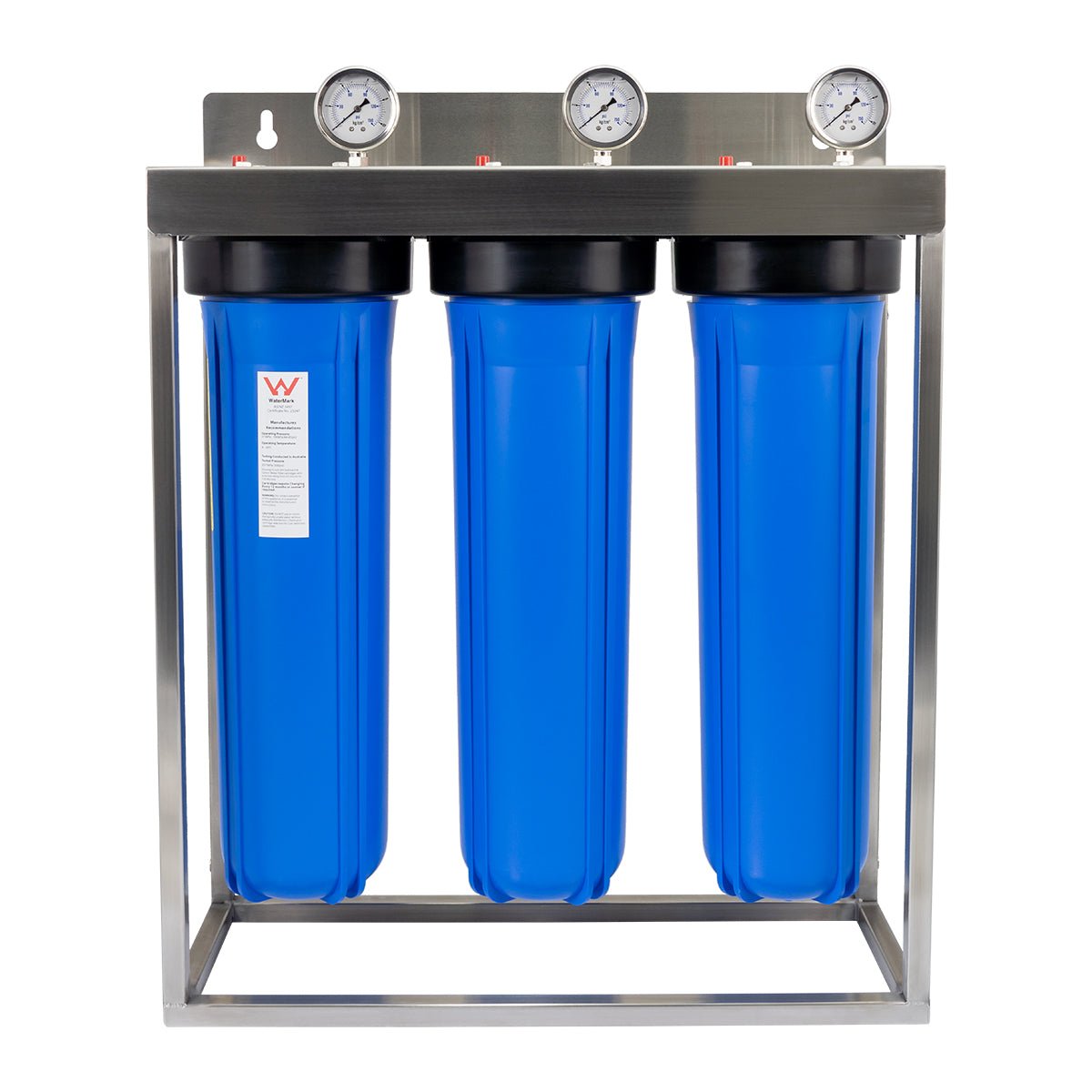
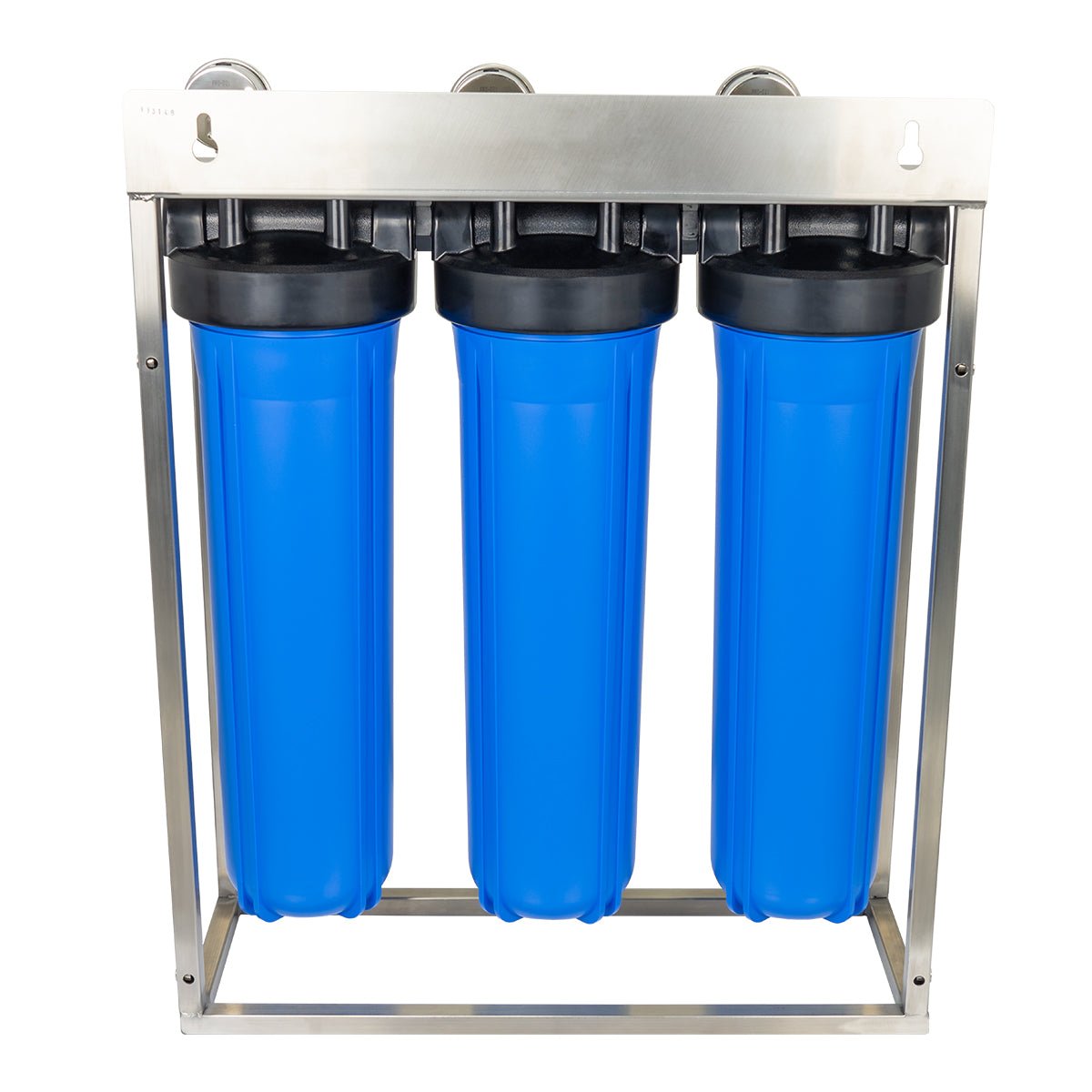
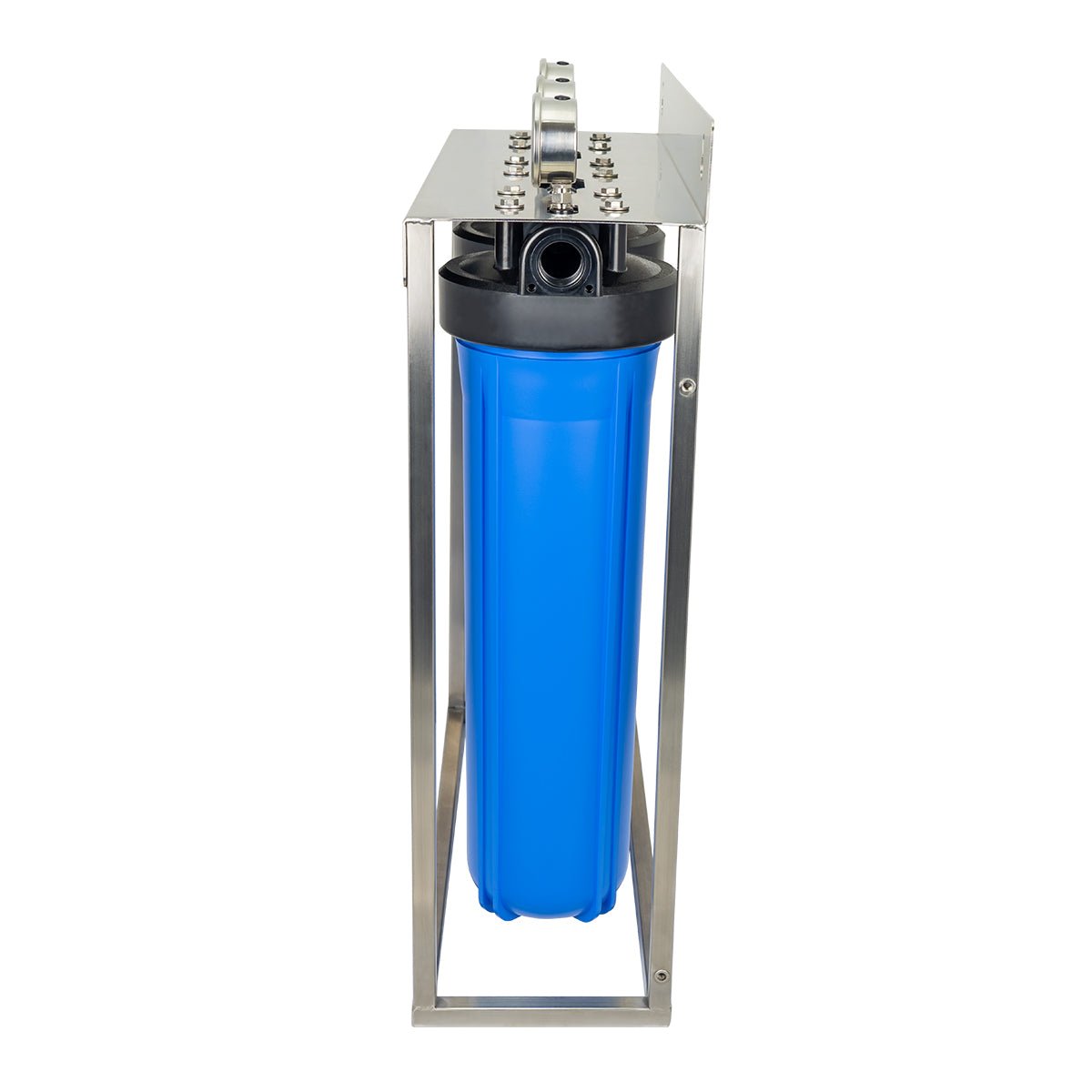
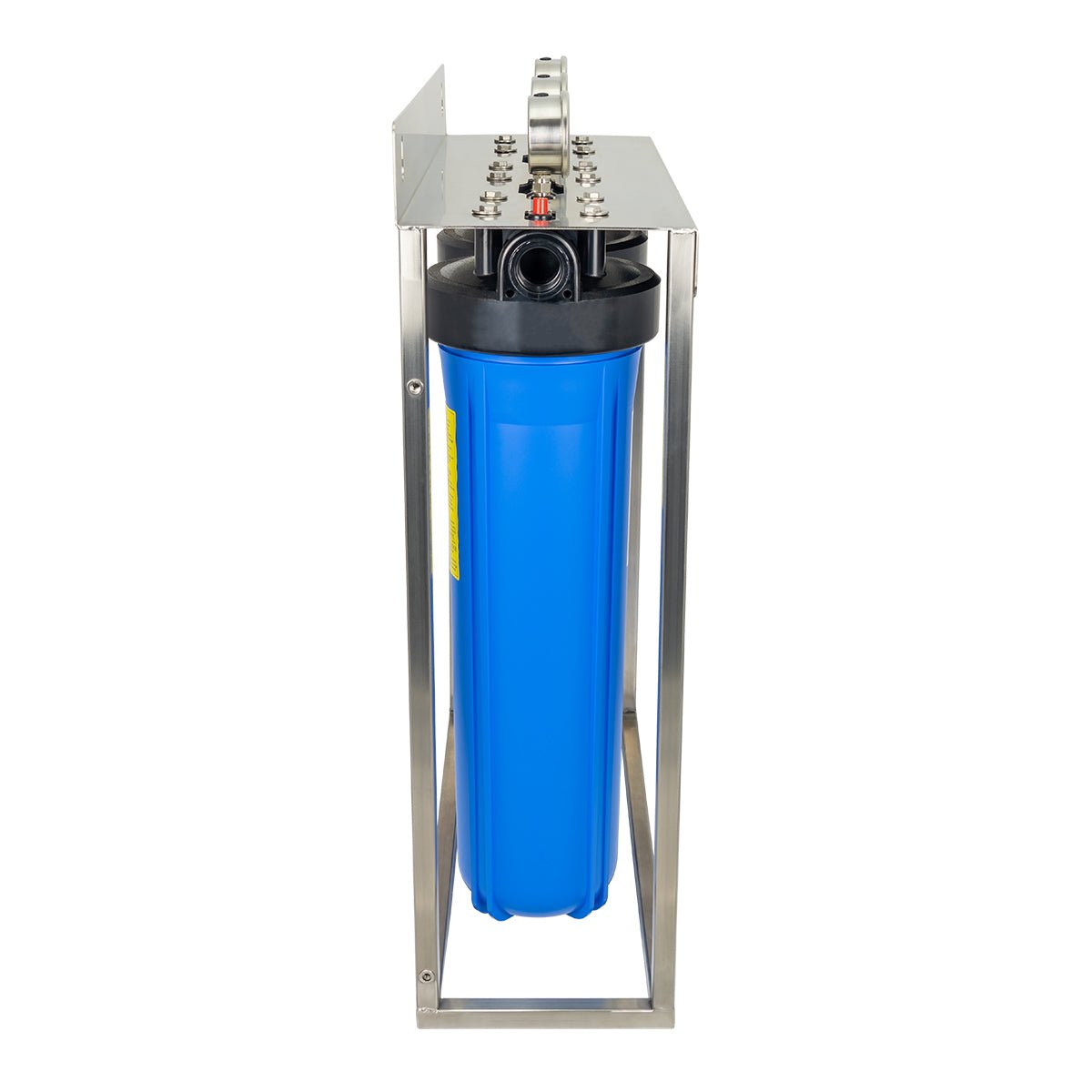
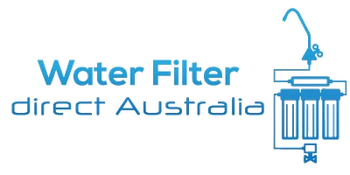








 PRODUCT DESCRIPTION
PRODUCT DESCRIPTION
